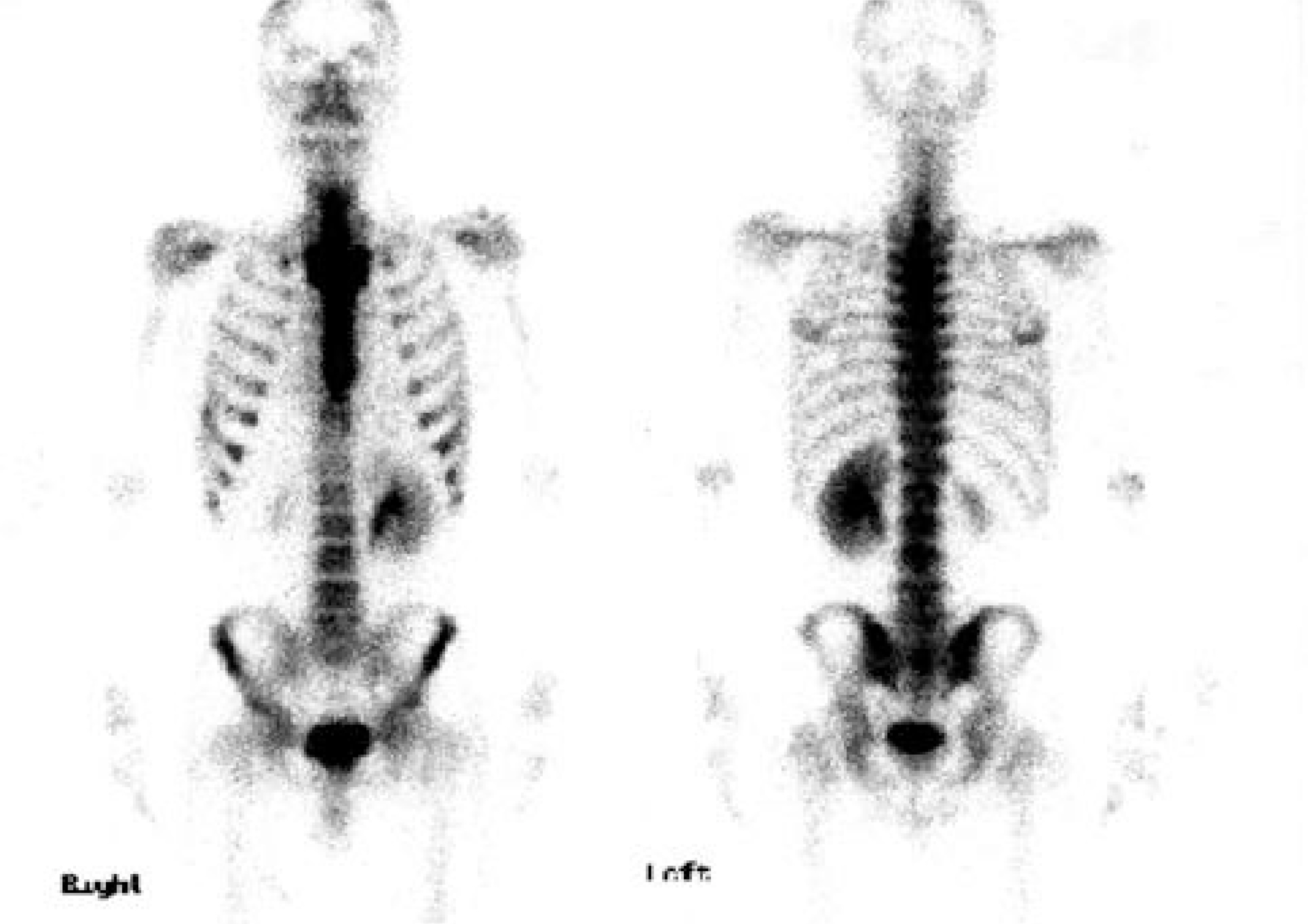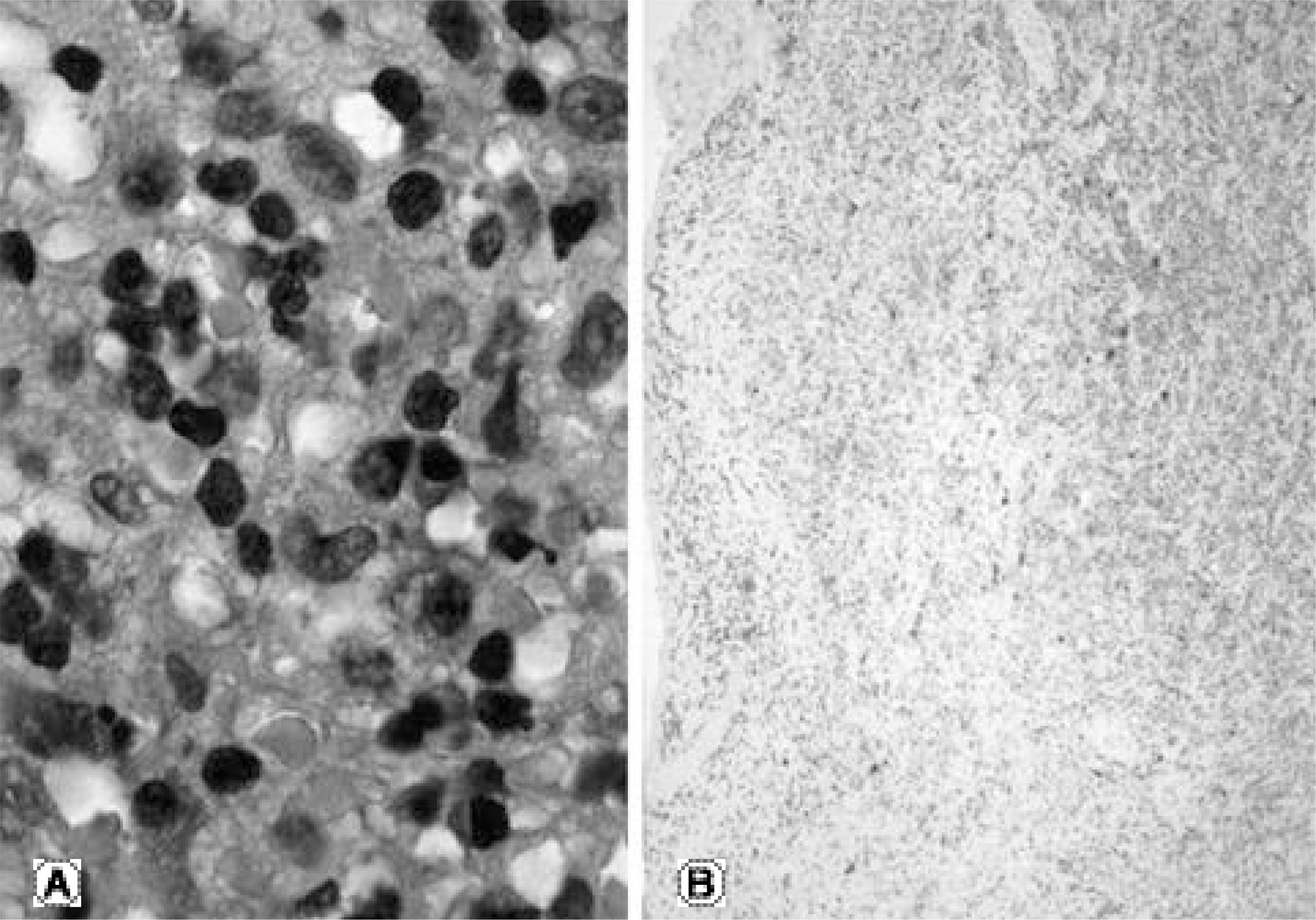J Korean Soc Spine Surg.
2006 Mar;13(1):64-68. 10.4184/jkss.2006.13.1.64.
Rosai-Dorfman Disease Occurred in Epidural Space of the Thoracic Spinal Canal
- Affiliations
-
- 1Department of Orthopaedic Surgery, Soonchunhyang University College of Medicine, Spine center Seoul, Korea. yil400@hosp.sch.ac.kr
- 2Department of Anatomical Pathology, Soonchunhyang University College of Medicine, Spine center Seoul, Korea.
- 3Department of Orthopaedic Surgery,Soonchunhyang University College of Medicine, Gumi hospital, Gumi, Korea.
- KMID: 2040783
- DOI: http://doi.org/10.4184/jkss.2006.13.1.64
Abstract
- Rosai-Dorfman disease is a rare, non-neoplastic lymphoproliferative disorder that is characterized by its specific histological features. However, it is uncommon for it to involve the thoracic spinal cord as a site of extranodal disease. A 36 year-old man developed progressive paraparesis 2 weeks prior to admission. On an MRI study, the spinal cord was compressed at the T4 and T5 levels posteriorly by an epidural mass. A decompressive laminectomy and removal of the mass were performed and Rosai-Dorfman disease was confirmed histologically. After the operation, additional high-dose radiotherapy was performed. The motor weakness and hypesthesia in the lower extremities resolved completely and there was no evidence of recurrence at the final follow-up examination.
MeSH Terms
Figure
Cited by 1 articles
-
Rosai-Dorfman Disease as a Solitary Lesion of the Tibia
Chang-Bae Kong, Jung-Wook Lee, Sang-Hyun Cho, Won-Seok Song, Wan-Hyeong Cho, Jae-Soo Koh, Dae-Geun Jeon, Soo-Yong Lee
J Korean Bone Joint Tumor Soc. 2014;20(1):32-35. doi: 10.5292/jkbjts.2014.20.1.32.
Reference
-
1). Sartoris DJ, Resnick D. Osseous involvement in sinus histiocytosis with massive lymphadenopathy (Rosai-Dorfman disease). Eur J Pediatr. 1986; 145:238–40.
Article2). Park JK, Cho MY, Park KH Pyon JS. Isolated intracranial Rosai-Dorfman disease - a case report. J Kor Pathol. 2004; 38:430–433.3). George J, Stacy G, Peabody T, Montag A. Rosai-Dorfman disease manifesting as a solitary lesion of the radius in a 41-year-old woman. Skeletal Radiol. 2003; 32:236–239.
Article4). Raveenthiran V, Dhanalakshmi M, Hayavadana Rao PV, Viswanathan P. Rosai-Dorfman disease: report of a 3-year-old girl with critical review of treatment options. Eur J Pediatr Surg. 2003; 13:350–354.
Article5). Hargett C, Bassett T. Atypical presentation of sinus histiocytosis with massive lymphadenopathy as an epidural spinal cord tumor: a case presentation and literature review. J Spinal Disord Tech. 2005; 18:193–196.6). Geara AR, Ayoubi MA, Achram MC, Chamseddine NM. Rosai-Dorfman disease mimicking neurofibromato -sis: case presentation and review of the literature. Clin Radiol. 2004; 59:625–630.7). Osenbach RK. Isolated extranodal sinus histiocytosis presentimg as an intramedullary spinal cord tumor with paraplegia. J Neurosurg. 1996; 85:692–696.
- Full Text Links
- Actions
-
Cited
- CITED
-
- Close
- Share
- Similar articles
-
- A Case of Cutaneous Rosai-Dorfman Disease Enlarged in Size after Punch Biopsy
- Rosai-Dorfman Disease in the Neck and Subglottis
- A Case of Rosai-Dorfman Disease Limited to the Lip
- Rapidly Growing Cutaneous Rosai-Dorfman Disease Successfully Treated with Surgical Excision
- Rosai-Dorfman Disease in Thoracic Spine: A Rare Case of Compression Fracture




